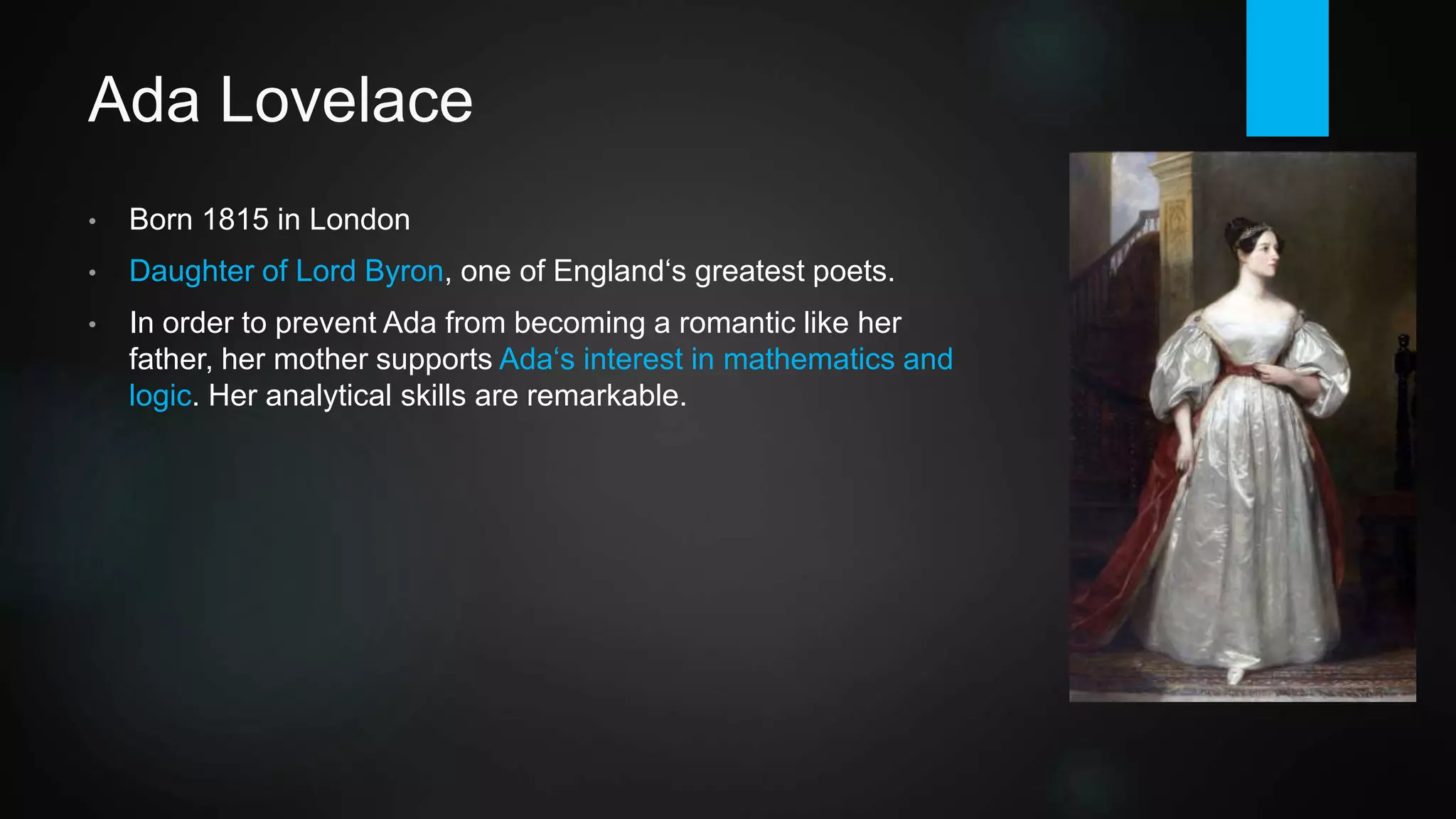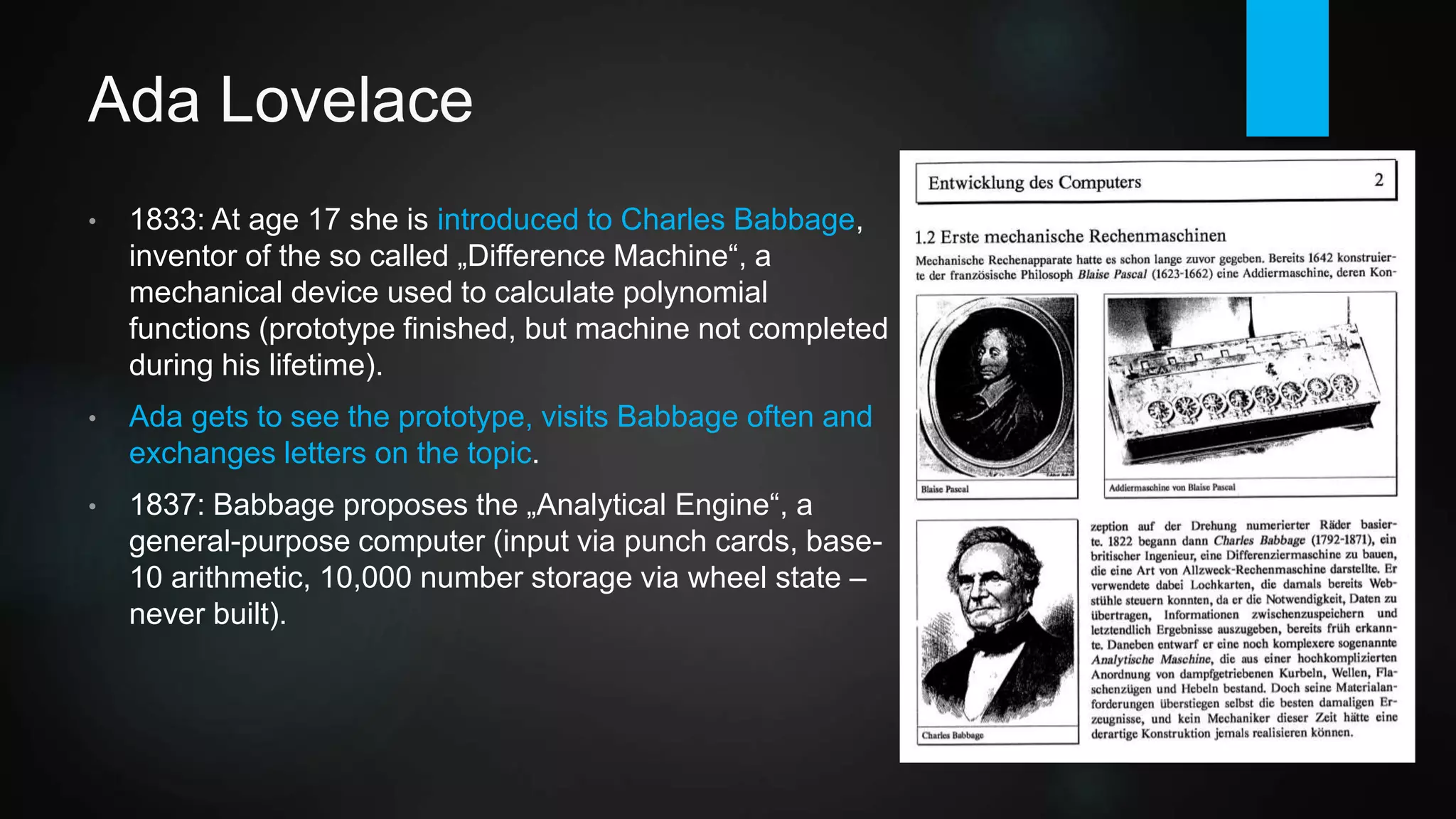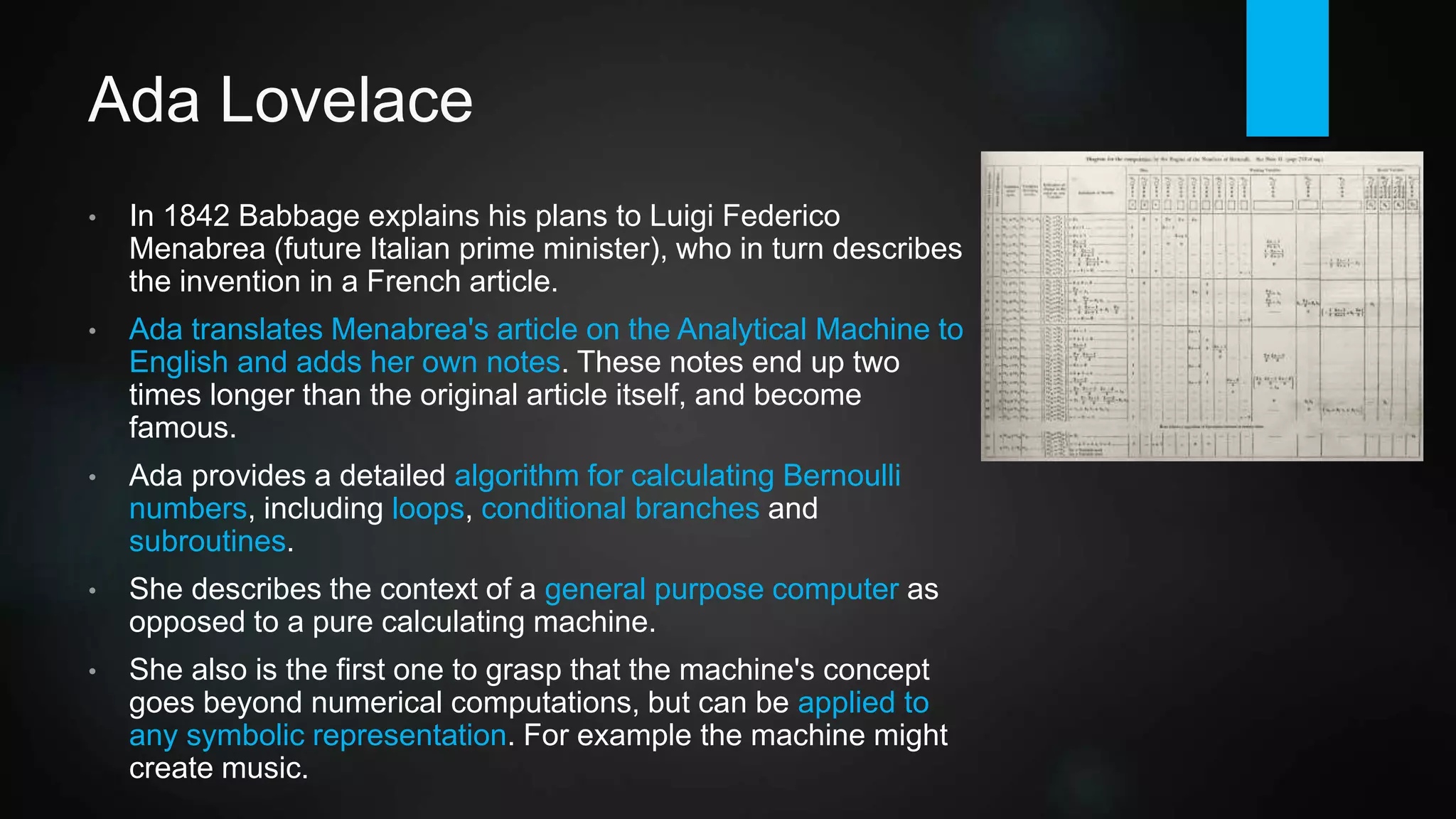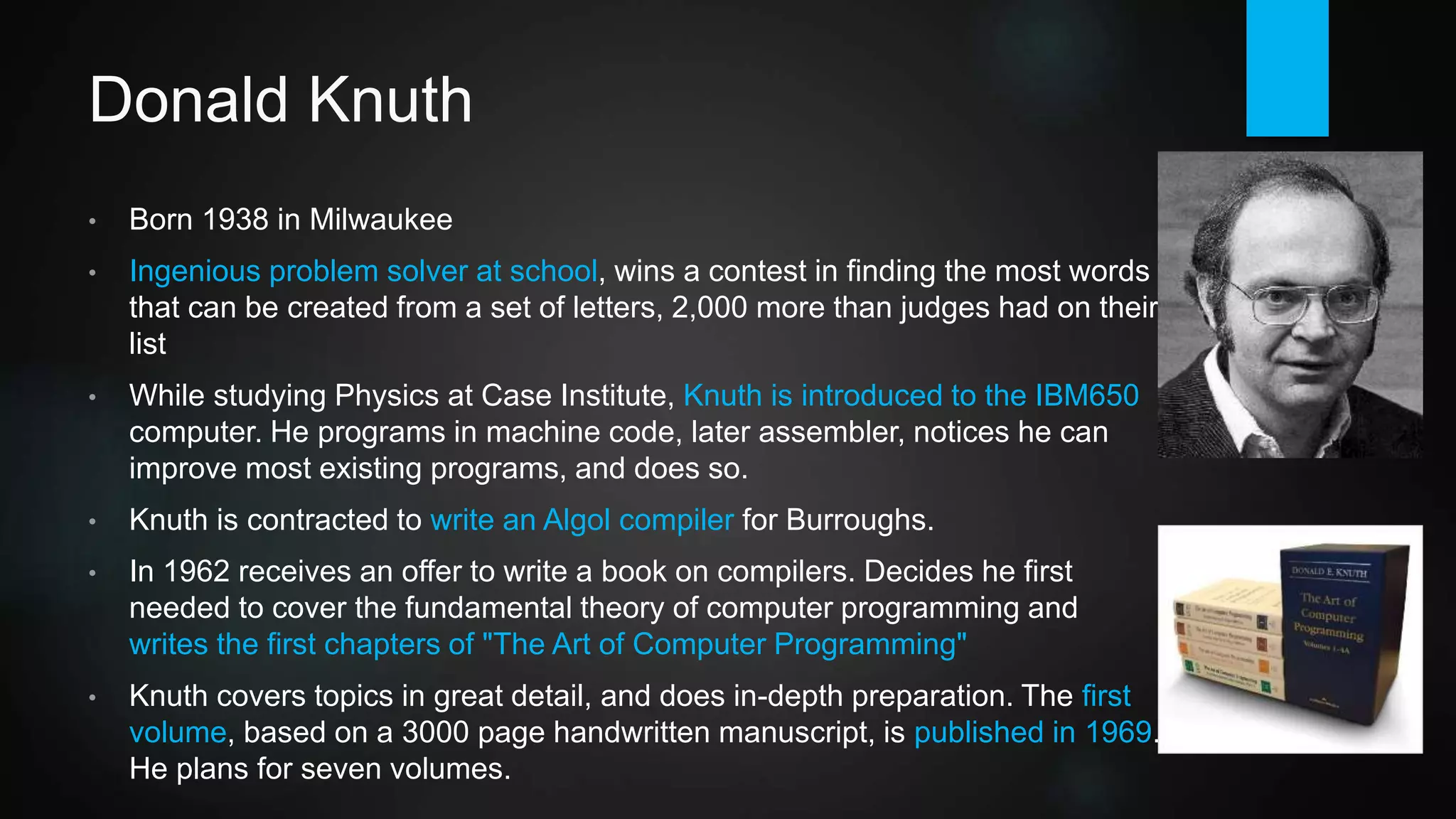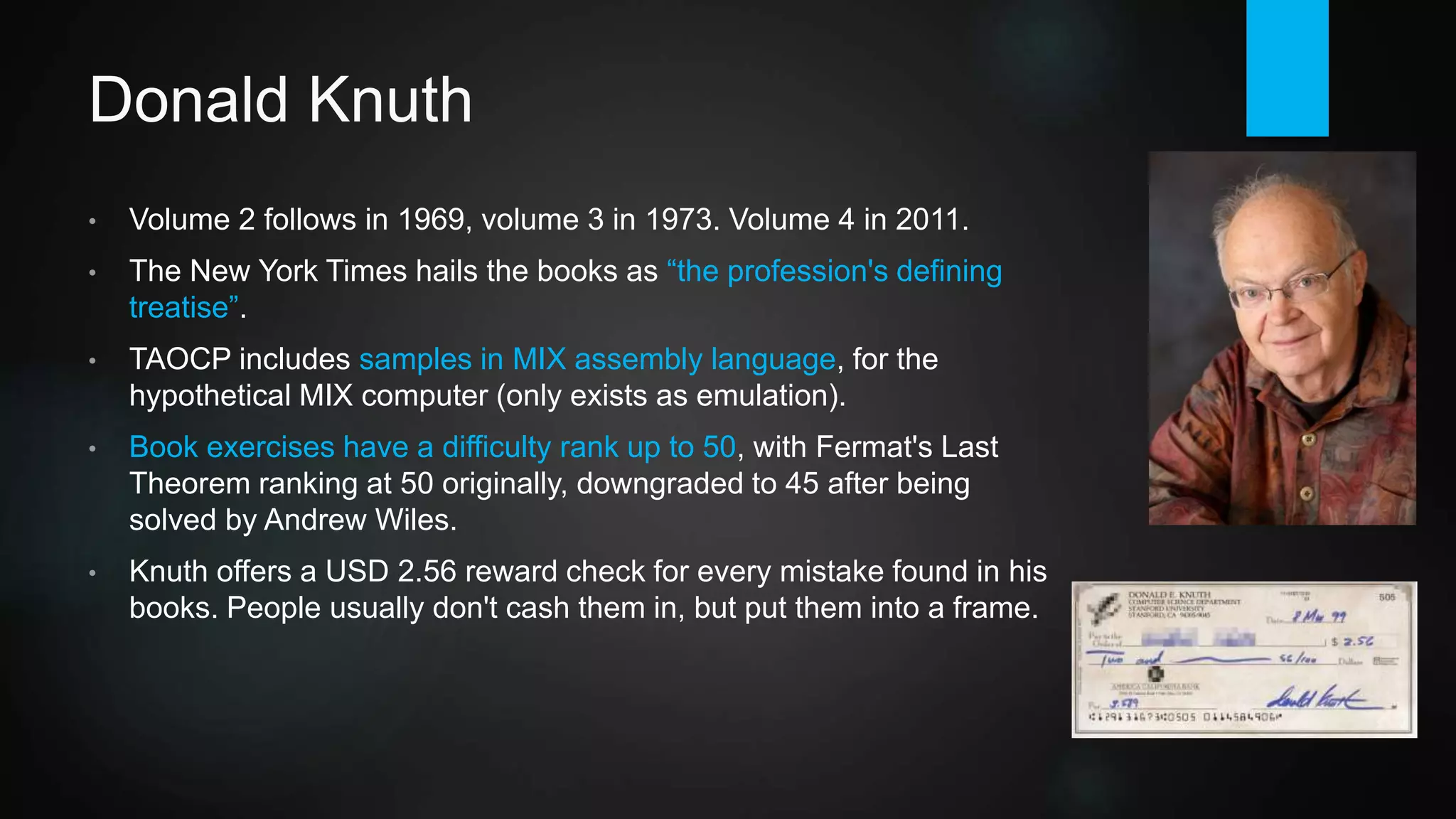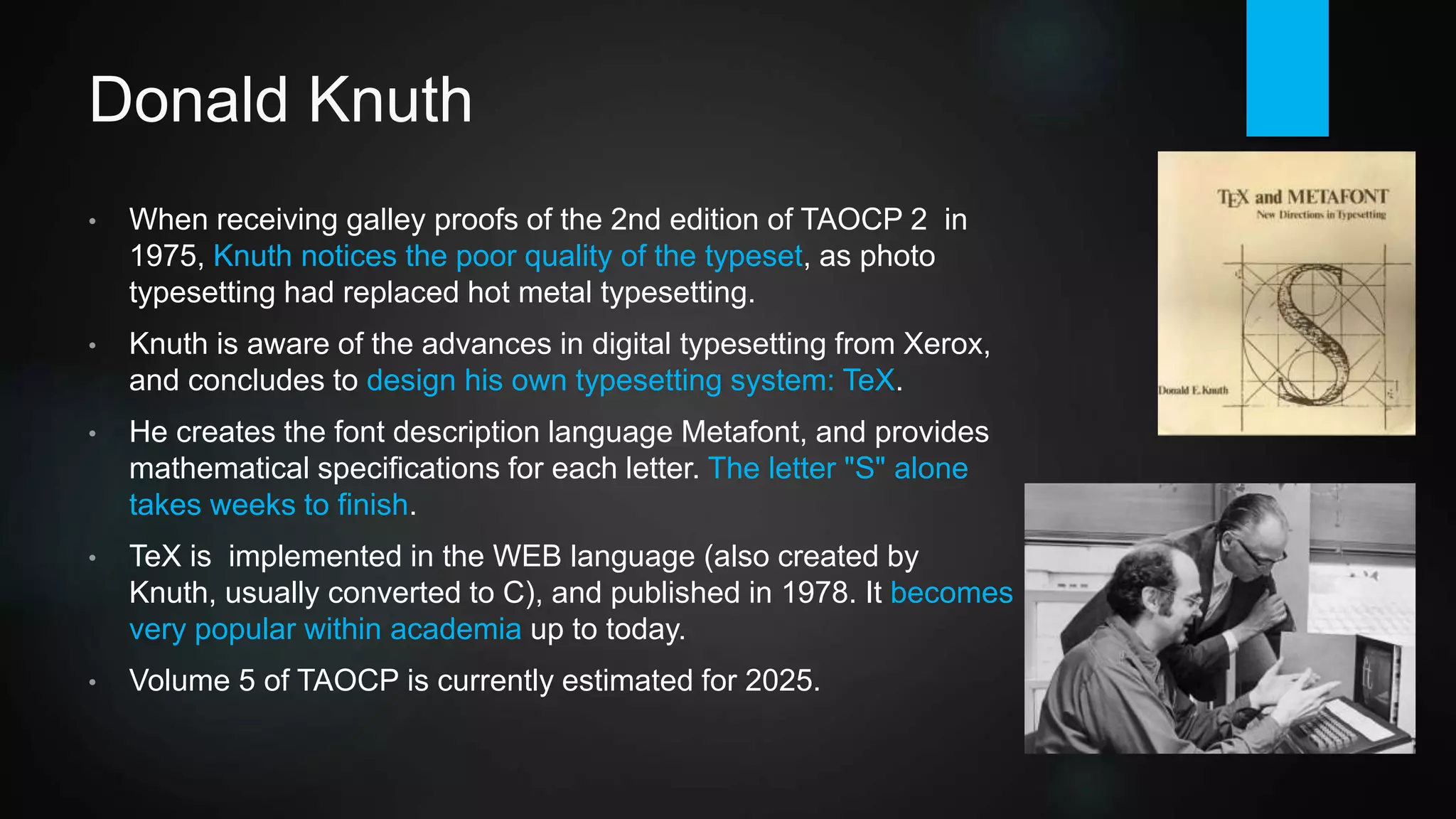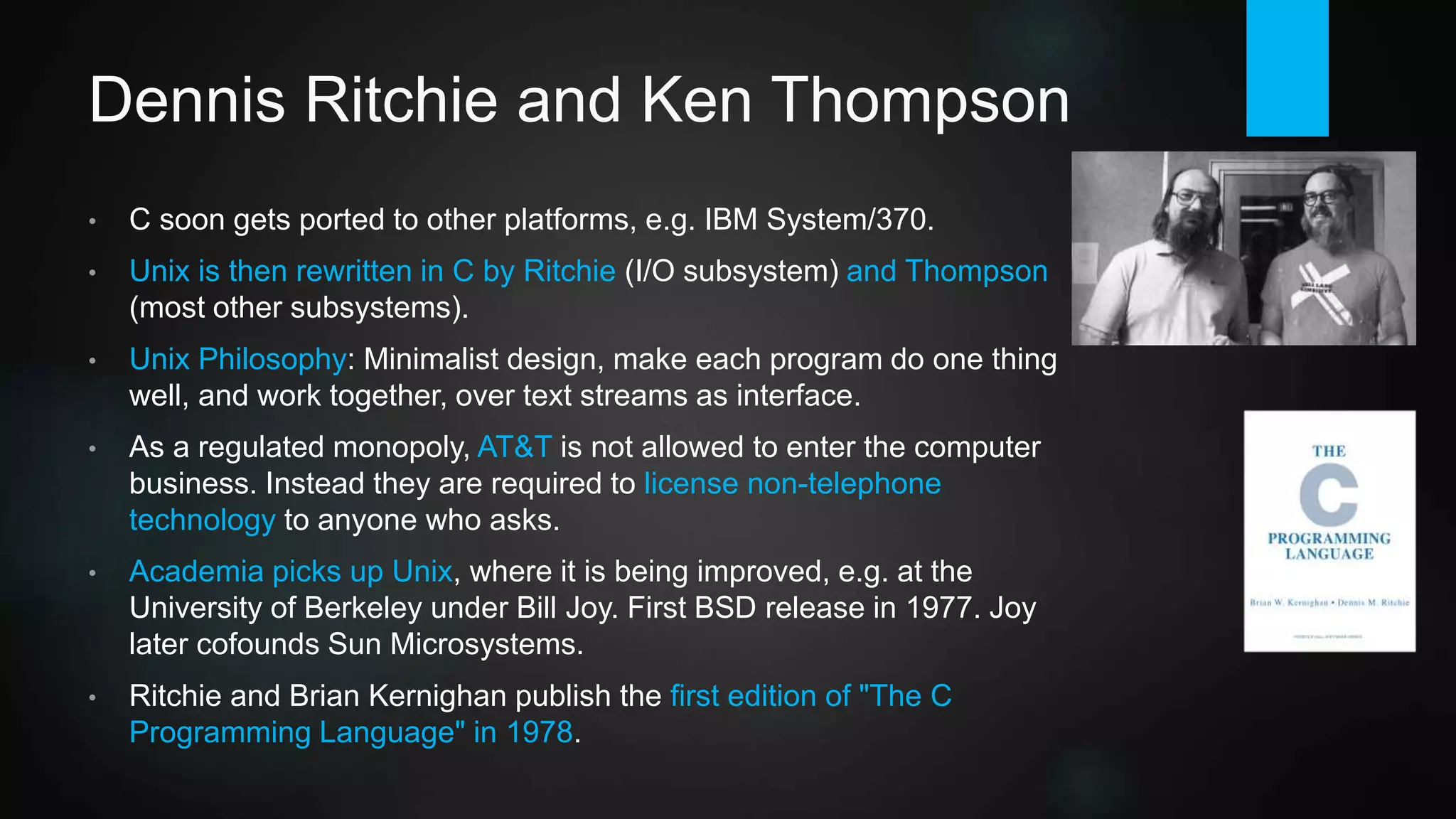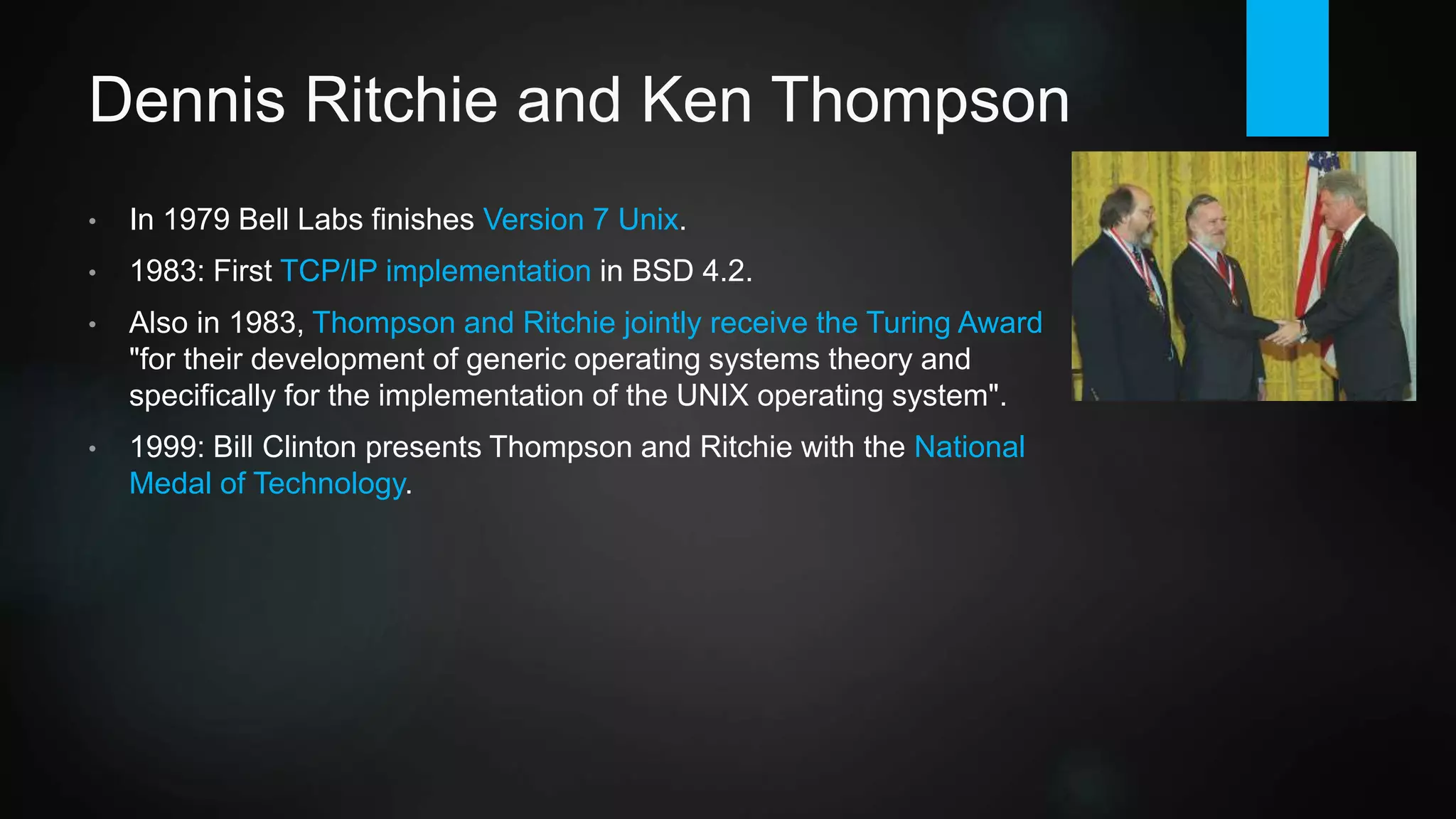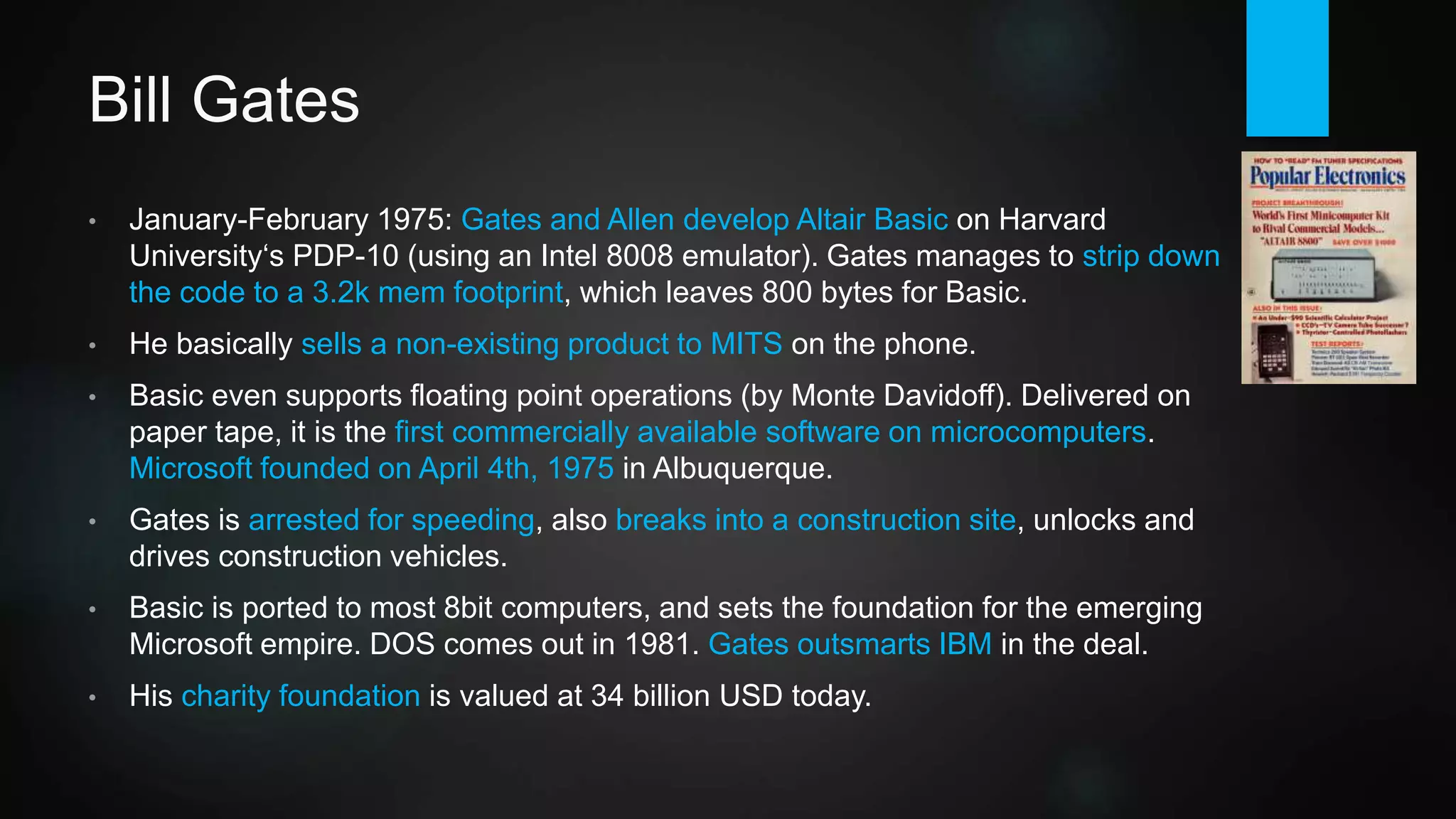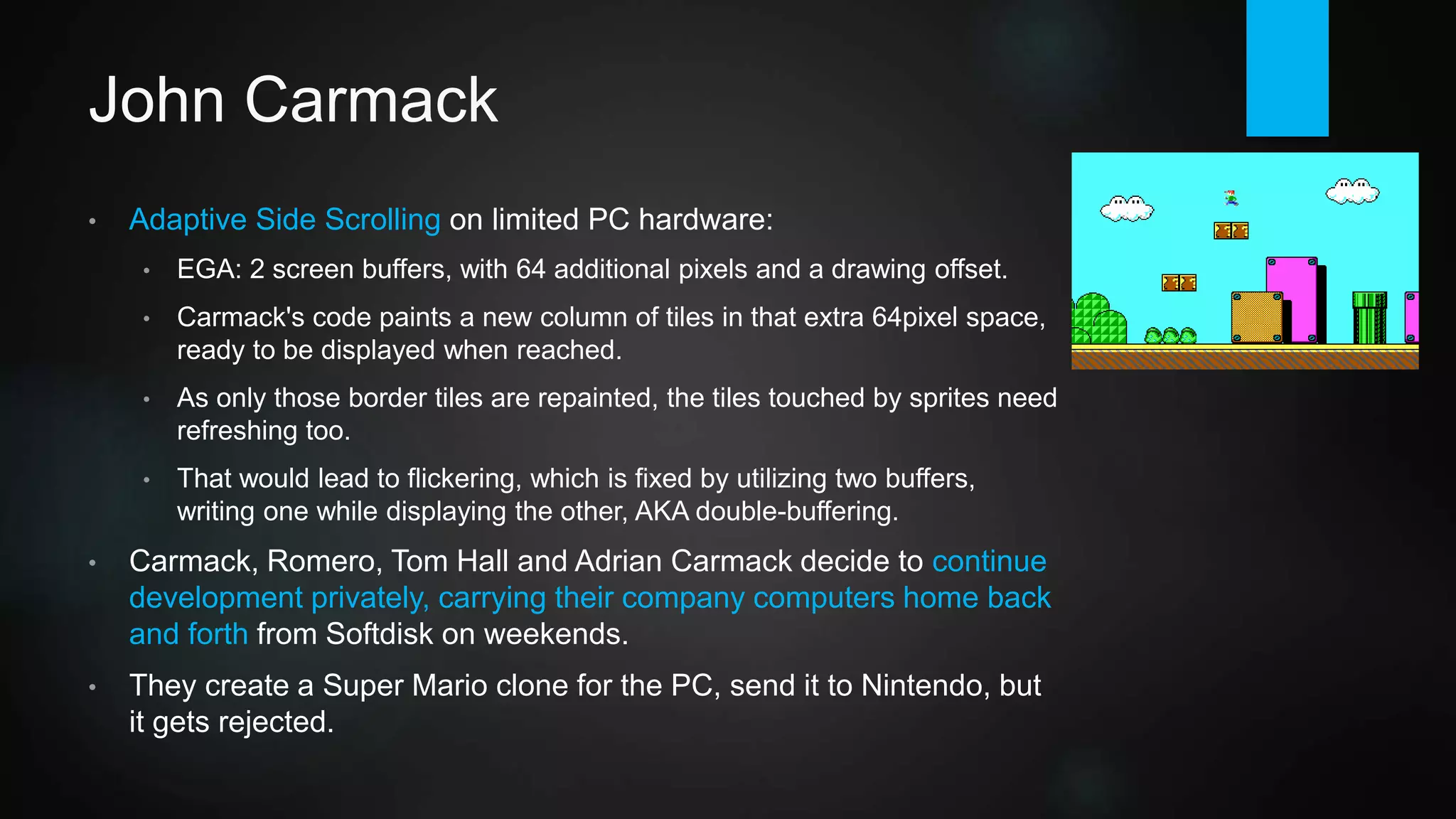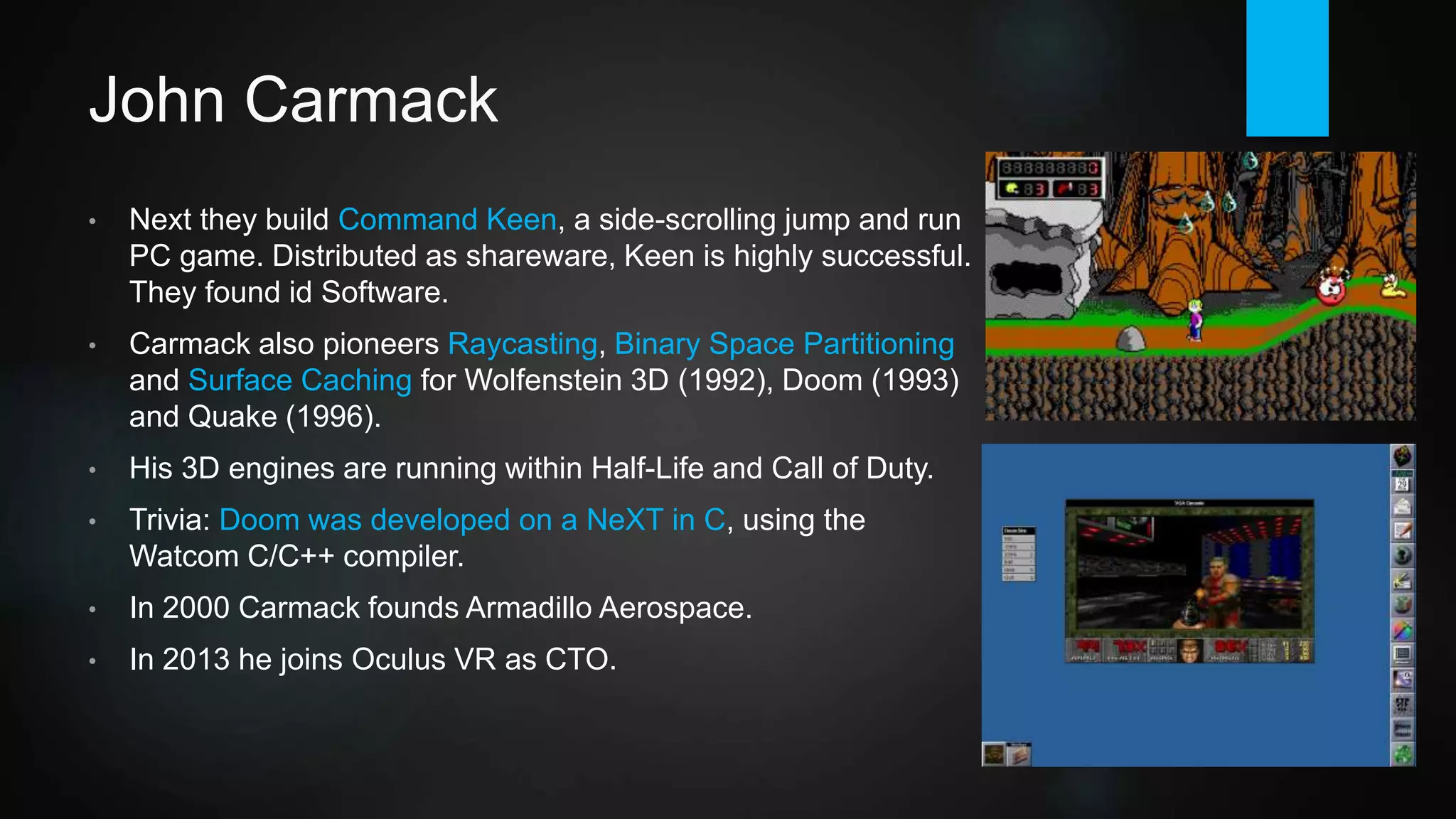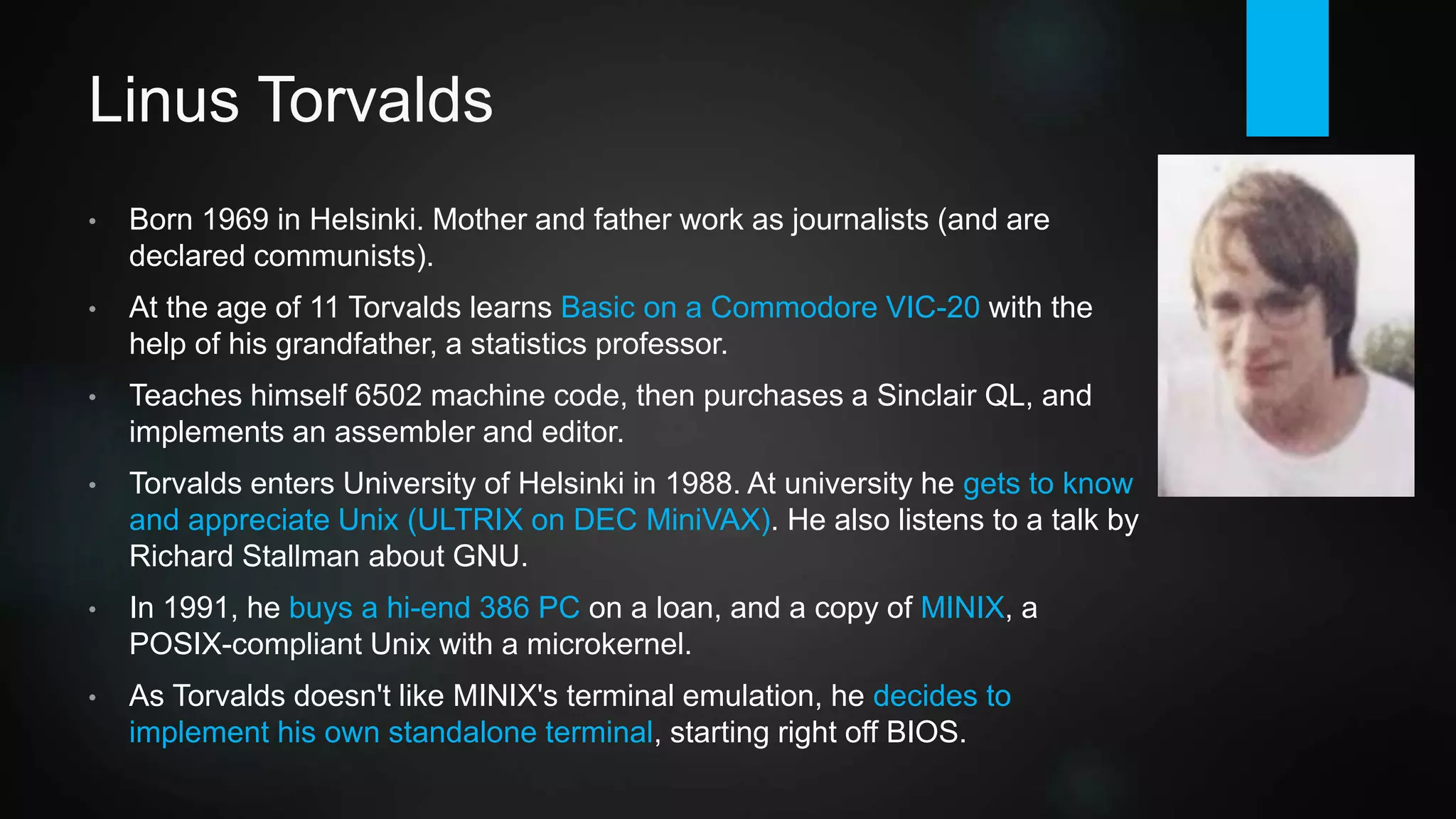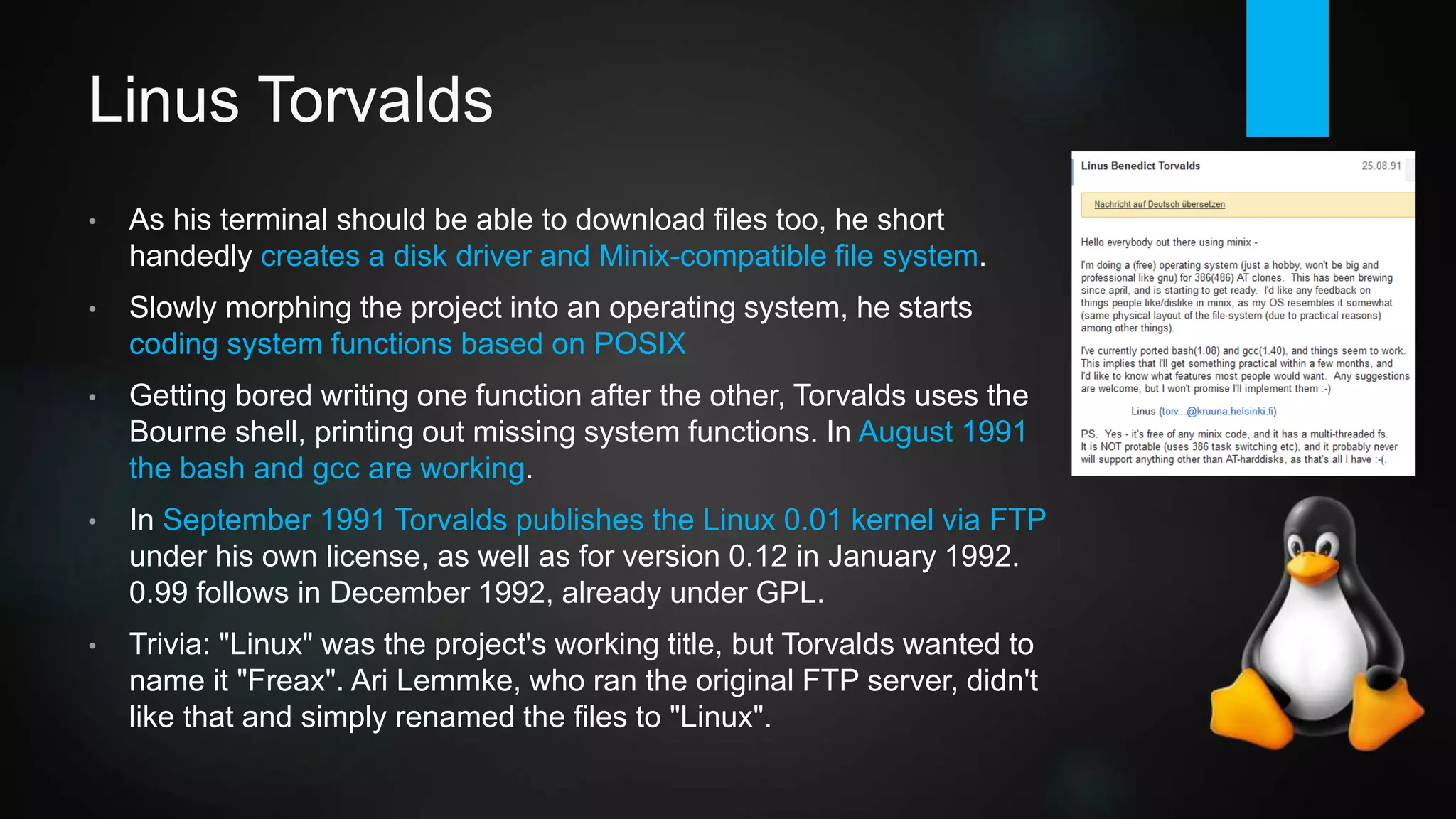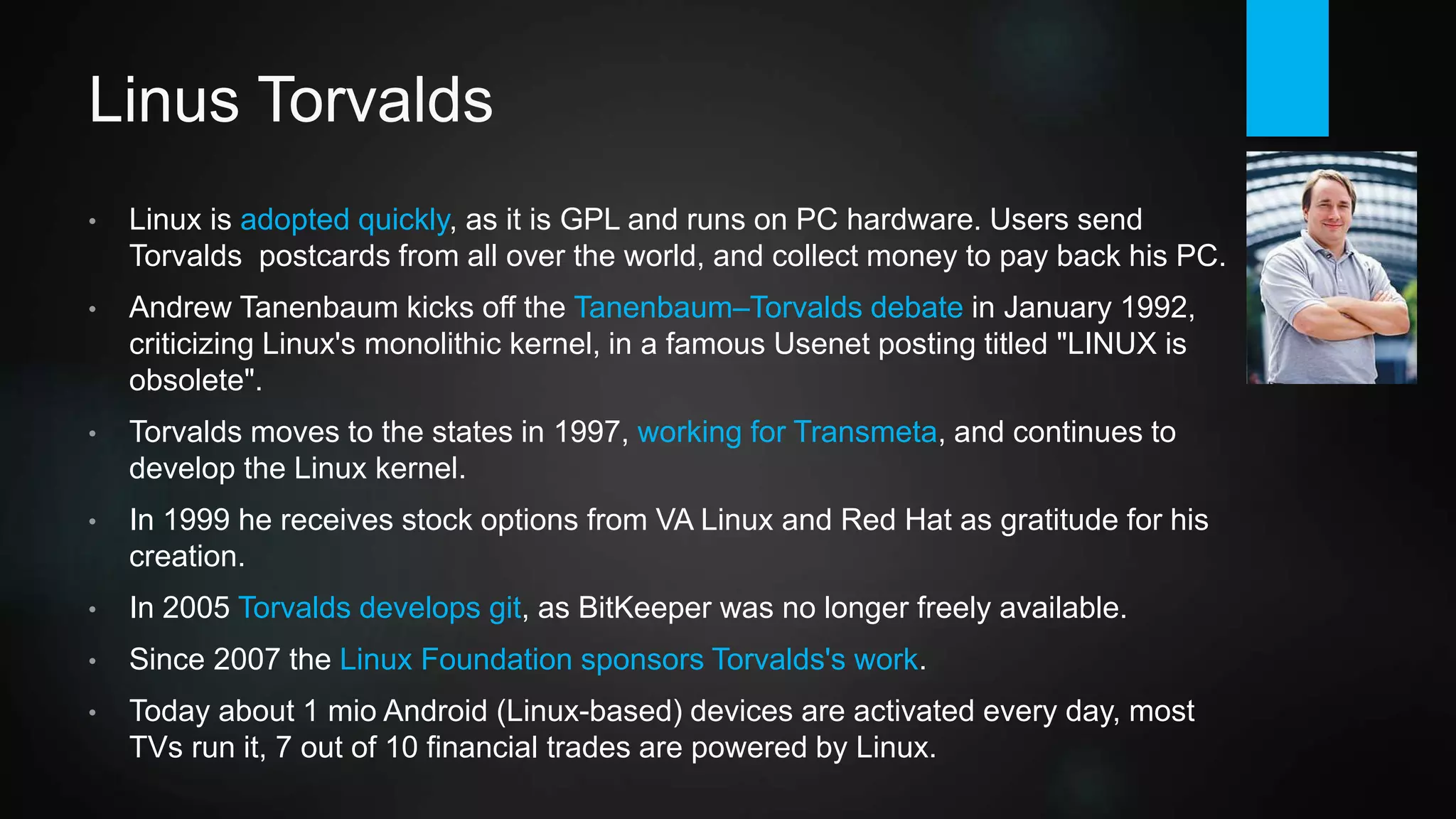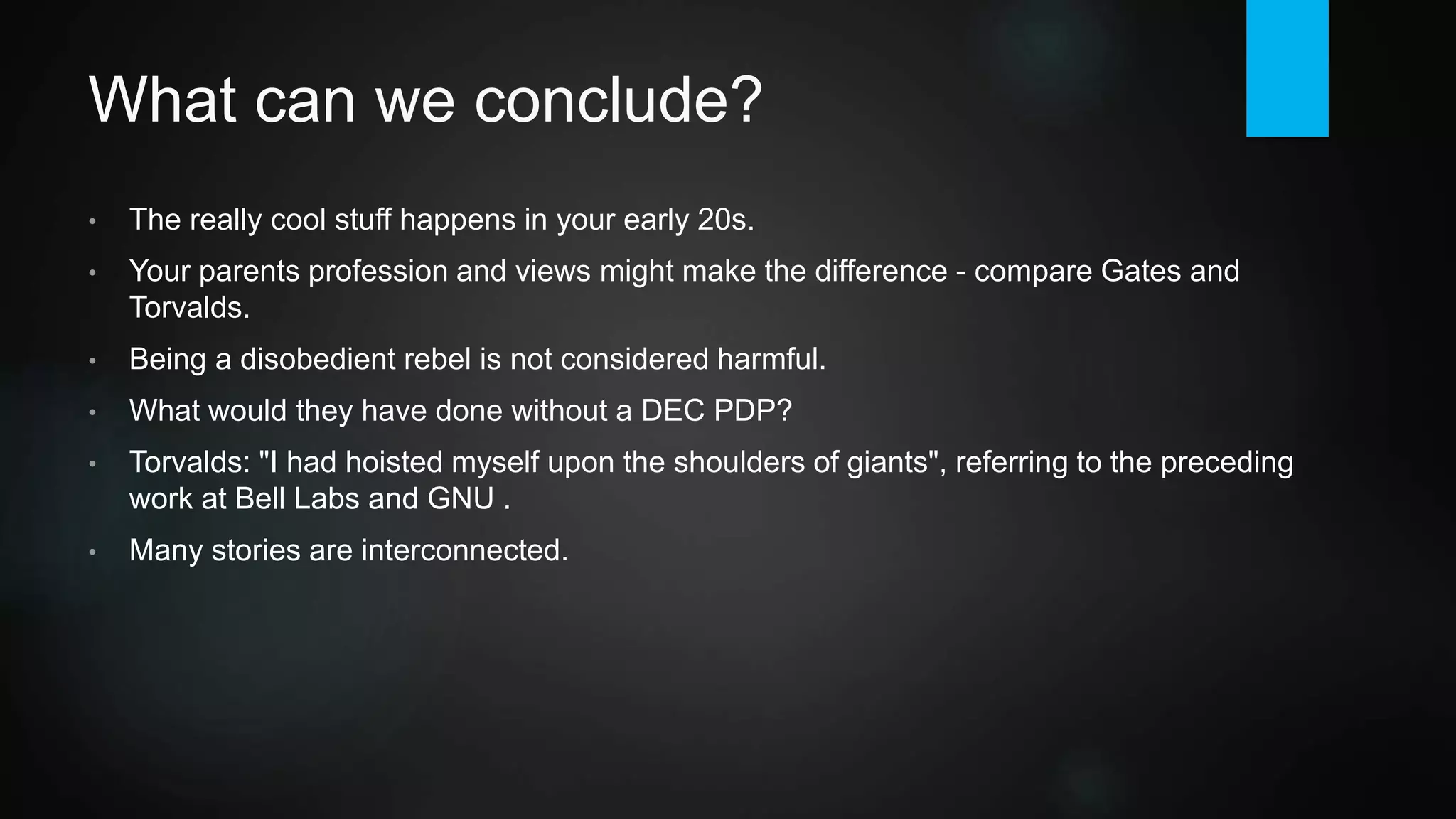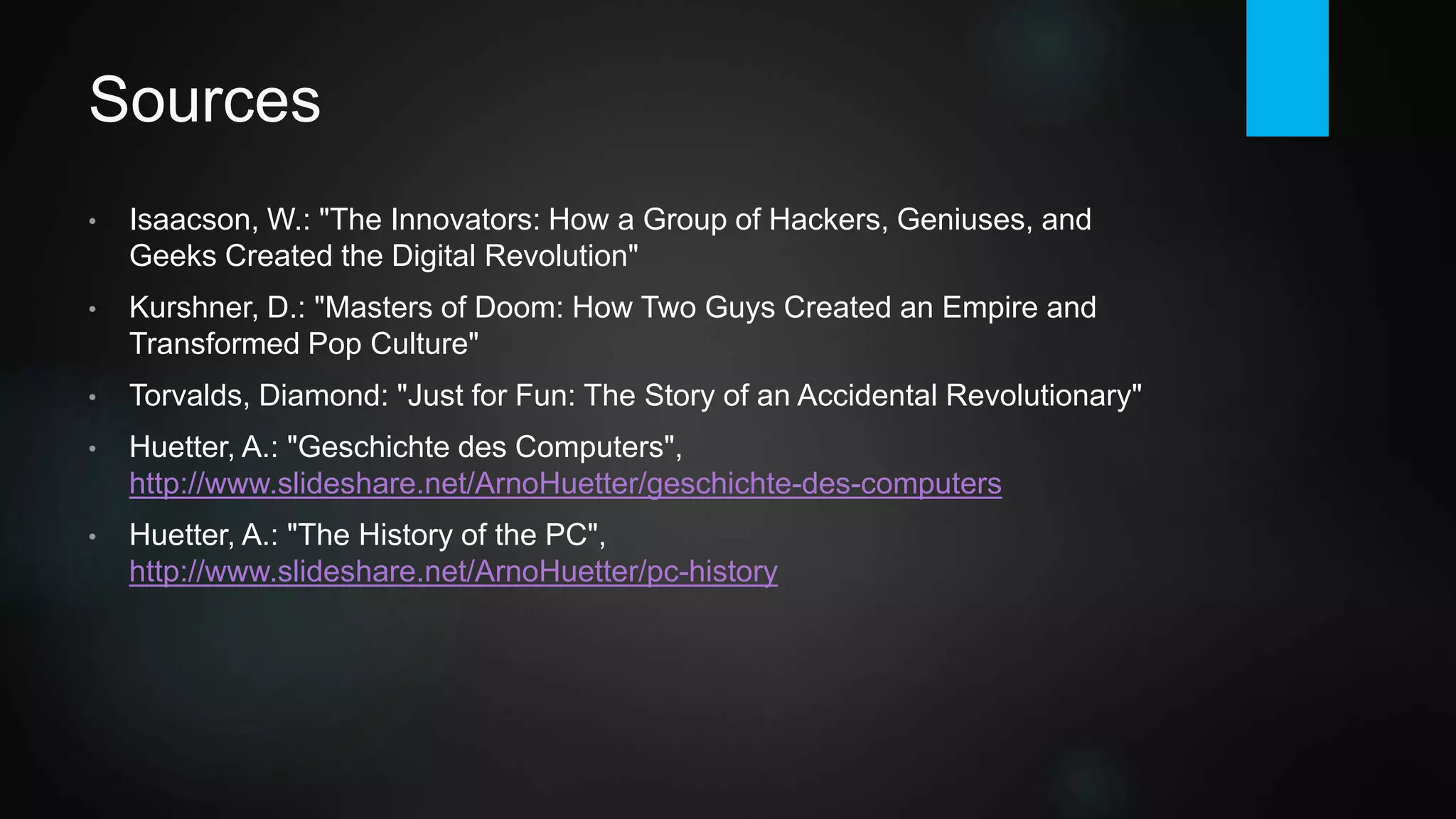The document highlights the contributions of various programming legends, including Ada Lovelace, Donald Knuth, Dennis Ritchie, Ken Thompson, Bill Gates, John Carmack, and Linus Torvalds, detailing their backgrounds, achievements, and significant impacts on the software development field. It discusses key innovations and milestones in computing history while recognizing the interplay of technical talent and historical context in their successes. Additional notable figures in programming history and their contributions are also mentioned.
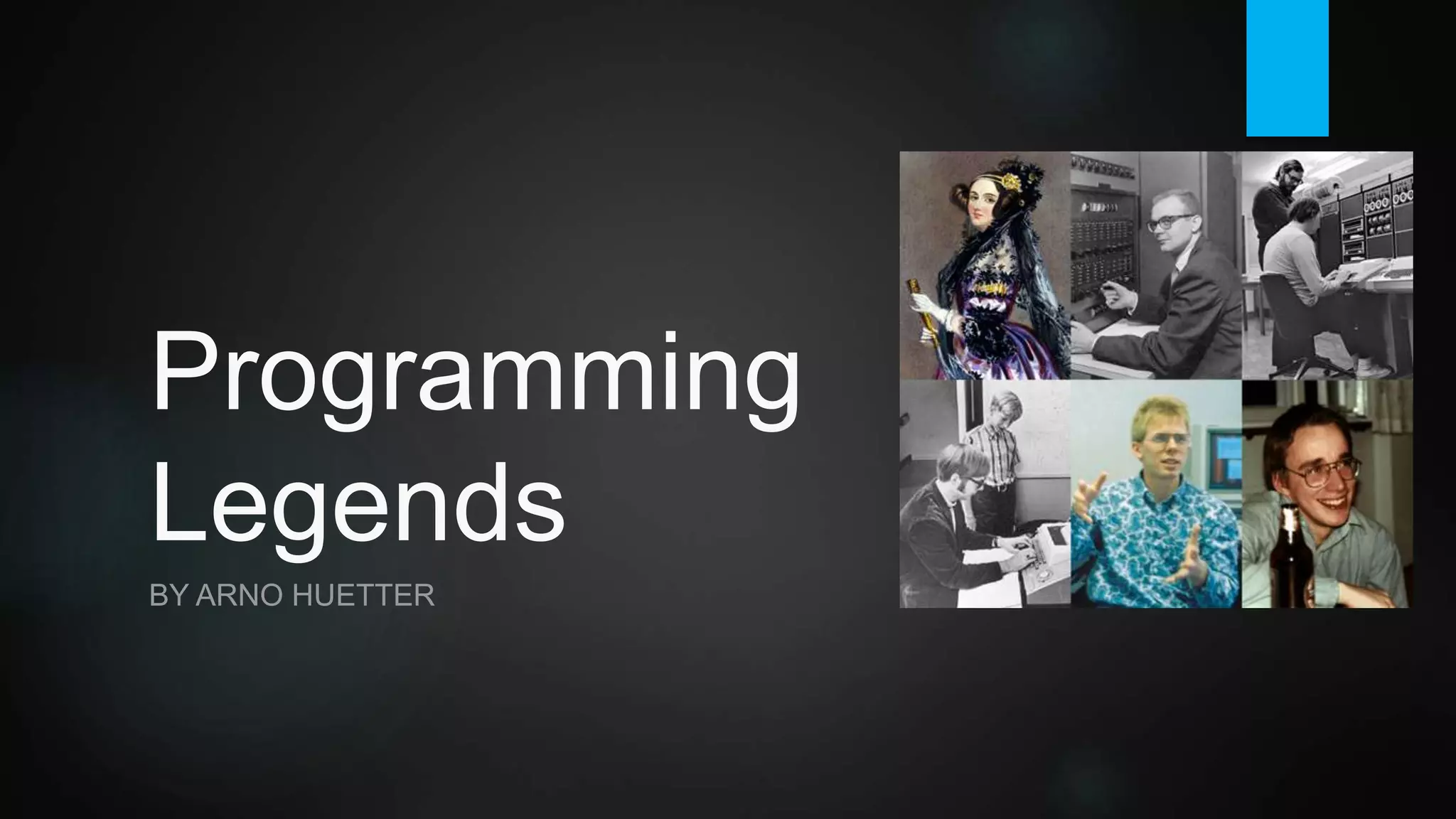
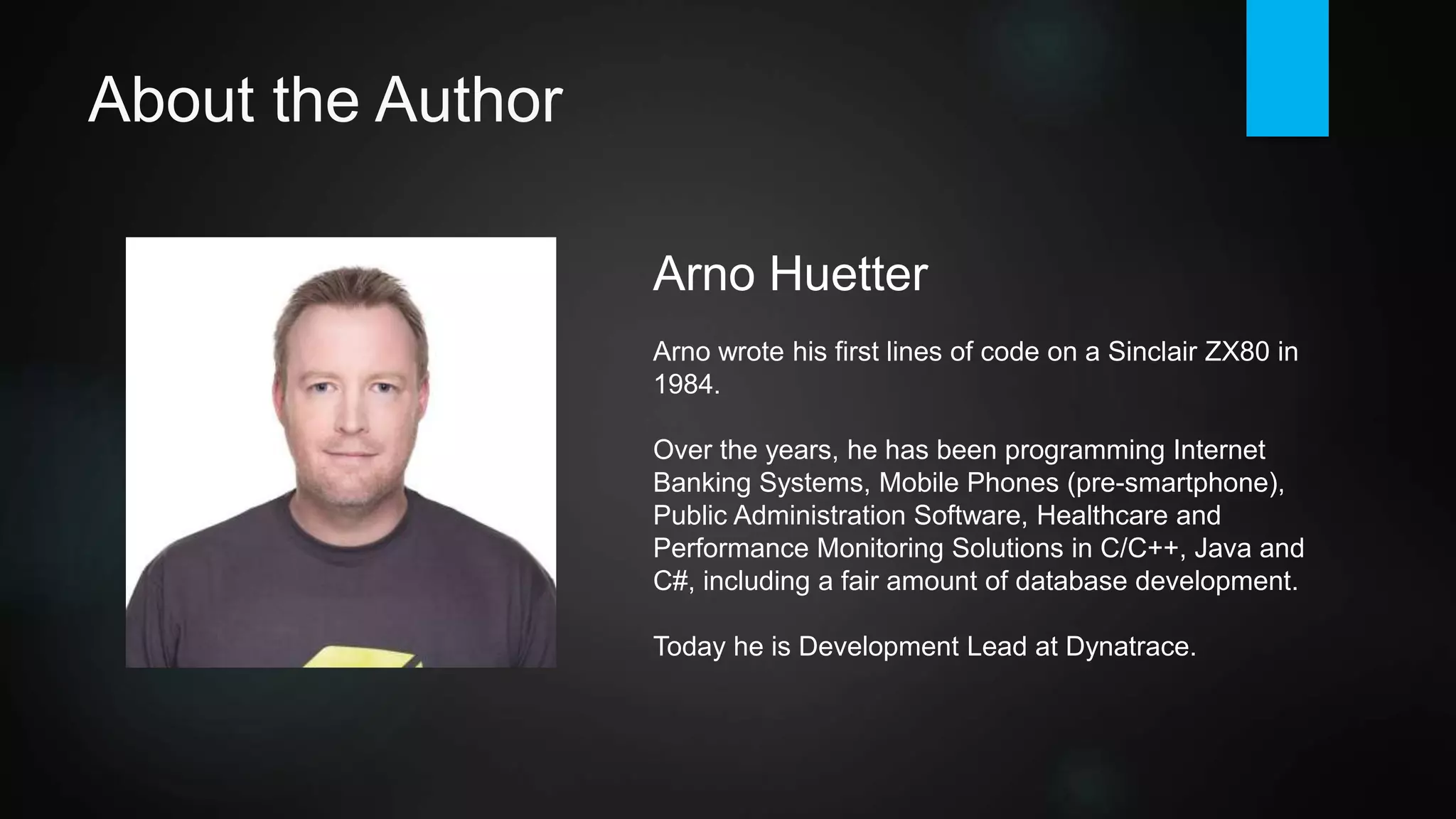
![Programming Legends
• "Programmers who contributed hugely to and had a lasting influence on the software
development profession, linked with an extraordinary personal story."
• Technical brilliance is one thing, but it might also require being at the right place at the right
time, finding a congenial partner or having recent innovations at one's disposal.
• Most "top 10 influential / famous / rockstar programmer lists" have the usual suspects:
• [1] Ritchie, Stroustrup, Gosling, Torvalds, Hejlsberg, Berners-Lee, Kernighan, Thompson, van Rossum, Knuth
• [2] Ritchie, Torvalds, Stroustrup, Berners-Lee, Kernighan, Knuth, Thompson, van Rossum, Gosling, Gates
• [3] Ritchie, Torvalds, Knuth, Thompson, Stroustrup, Berners-Lee, Kernighan, Gosling, Stallman, Lovelace
• Alan Turing? Mathematician, cryptanalyst, specified electromechanical code-breaking devices,
proposed universal computing machine.
• Steve Wozniak? Great programmer, but his genius was in electronic engineering.
• This small selection is based on a voting within a developer-only Facebook group plus one
author choice (Ritchie/Thompson).](https://image.slidesharecdn.com/programmers-161201172644/75/The-world-s-most-famous-programmers-3-2048.jpg)
